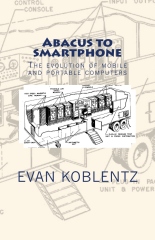

Home
Excerpts
Author
FAQ
Reviews
Media
Errata
Osborne's success led to several upgraded models and inspired tough competition from companies such as Columbia Data Systems, Compaq (notable for its IBM PC compatibility), Dynalogic, Eagle, Non-Linear Systems (Kaypro), and others. Established computer giants Commodore and IBM got into the game, with suitcase versions of the Commodore 64 (SX-64) and IBM PC (IBM 5155 Portable). Even minicomputer leader DEC listened to, but did not license, a suitcase computer pitch from R2E. Along with handheld calculators from Hewlett-Packard and Texas Instruments, suitcase computers ruled the mobile world for a few years in the early-to-middle 1980s, and it was Osborne that really made it happen.
Compaq, of course, was the biggest long-term success story. Texas Instruments alumni formed the company in 1982, reverse-engineered the IBM PC input/output software, and sold about 50,000 suitcase computers in their first year. It graduated into desktop PC-compatibles, and then made splashy acquisitions of Tandem and DEC to move into business-class servers and storage. Compaq also made PDAs in the 1990s. The company ended with a bang in 2002, being acquired by Hewlett-Packard for a massive $25 billion.
The cultural impact on the daily life of ordinary people who owned an Osborne, Compaq, Kaypro, or other suitcase computer is just as important as the technical history. Before, only portable calculating devices — such as the abacus, slide rule, and electronic calculator — were common products. Everything else, such as the Fieldata trucks and minicomputers with handles, were bridges between the past and the future. The rise of luggable systems changed that. Digital, electronic, general-purpose portable computers were now a mainstream consumer product. You could purchase one in your neighborhood store, buy books and software, plug it in anywhere, and it just worked.
Not that there weren't downsides. Transportables weighed 20-30 pounds. It was not uncommon to see a business traveler switching his computer from hand to hand every 50 feet, given the discomfort of carrying it. Operating such a computer required a desk: these were not laptops. And good luck if it fell on your foot...
Print edition: $19.99
via CreateSpace

PDF: Only $8.
(Please be nice and don't post it.
Thank you for understanding.)

Contact the author:
info@abacustosmartphone.com


